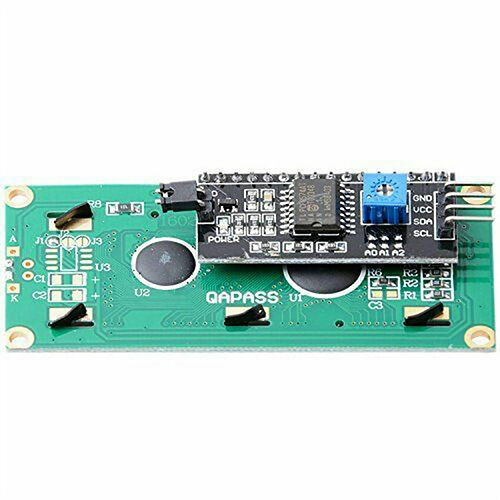Railroader:
Change to a better library. Use hd44780. It finds the I2C address by iyself.
Here0 is a piece of code showing a l
7
ittle from my projs.
//Ver 191221c Styr med potentiometer
//Ver 191221d Universal buton_read installed
//I2C for LCD
#include <Wire.h>
#include <hd44780.h>
#include <hd44780ioClass/hd44780_I2Cexp.h>
hd44780_I2Cexp mylcd; // declare lcd object: auto locate & config exapander chip
// LCD geometry
#define LCD_COLS 16
#define LCD_ROWS 2
#define PWM1_pin 5
#define PWM2_pin 3
//#define dir_pin 4
#define dir_select_pin 2
#define speed_pin A2
#define auto_return_pin 5
#define auto_return_end_pin 6
boolean direction_bwd, last_dir = true;
int PWM_out, dsp_toggle;
unsigned long last_button_read, dsp_time;
bool tst_dir;
void setup()
{
Serial.begin(115200);
bool status = mylcd.begin(LCD_COLS, LCD_ROWS);
if (status) // non zero status means it was unsuccesful
{
status = -status; // convert negative status value to positive number
// begin() failed so blink error code using the onboard LED if possible
hd44780::fatalError(status); // does not return
}
mylcd.clear();
Mind the remarks by the other helpers!
I've toke a few hours to figure out this lab but still couldn't understand the function lmao. Is it just need me to connect the LCD directly without I2C or I should link the SCL&SDA for this code?
// vi:ts=4
// ----------------------------------------------------------------------------
// HelloWorld - simple demonstration of lcd
// Created by Bill Perry 2016-07-02
// bperrybap@opensource.billsworld.billandterrie.com
//
// This example code is unlicensed and is released into the public domain
// ----------------------------------------------------------------------------
//
// This sketch is for LCD modules that have a native I2C interface such as
// PCF2119x, PCF2116, or certain RayStar LCDs rather than those LCD modules that
// use an i/o expander chip based based backpack.
// NOTE:
// These devices usually need external pullups as they typically are not on
// the module.
// WARNING:
// Use caution when using 3v only processors like arm and ESP8266 processors
// when interfacing with 5v modules as not doing proper level shifting or
// incorrectly hooking things up can damage the processor.
//
// Sketch prints "Hello, World!" on the lcd
//
// If initialization of the LCD fails and the arduino supports a built in LED,
// the sketch will simply blink the built in LED.
//
// ----------------------------------------------------------------------------
// LiquidCrystal compability:
// Since hd44780 is LiquidCrystal API compatible, most existing LiquidCrystal
// sketches should work with hd44780 hd44780_I2Clcd i/o class once the
// includes are changed to use hd44780 and the lcd object constructor is
// changed to use the hd44780_I2Clcd i/o class.
#include <Wire.h>
#include <hd44780.h>
#include <hd44780ioClass/hd44780_I2Clcd.h> // i2c LCD i/o class header
// Note, i2c address can be specified or automatically located
// If you wish to use a specific address comment out this constructor
// and use the constructor below that specifies the address
// declare the lcd object for auto i2c address location
hd44780_I2Clcd lcd;
//
// enter address of LCD.
// Addresses seen so far include:
// - 0x3a, 0x3b (PCF2119x)
// - 0x3c (unknwon chip)
// - 0x3d (unknwon chip)
// - 0x3e (unknwon chip)
// - 0x3f (unknwon chip)
// declare i2c address and constructor for specified i2c address
//const int i2c_addr = 0x3e;
//hd44780_I2Clcd lcd(i2c_addr); // use device at this address
// LCD geometry
const int LCD_COLS = 16;
const int LCD_ROWS = 2;
void setup()
{
int status;
// initialize LCD with number of columns and rows:
// hd44780 returns a status from begin() that can be used
// to determine if initalization failed.
// the actual status codes are defined in <hd44780.h>
// See the values RV_XXXX
//
// looking at the return status from begin() is optional
// it is being done here to provide feedback should there be an issue
//
status = lcd.begin(LCD_COLS, LCD_ROWS);
if(status) // non zero status means it was unsuccesful
{
status = -status; // convert negative status value to positive number
// begin() failed so blink error code using the onboard LED if possible
hd44780::fatalError(status); // does not return
}
// Print a message to the LCD
lcd.print("Hello, World!");
}
void loop() {}



